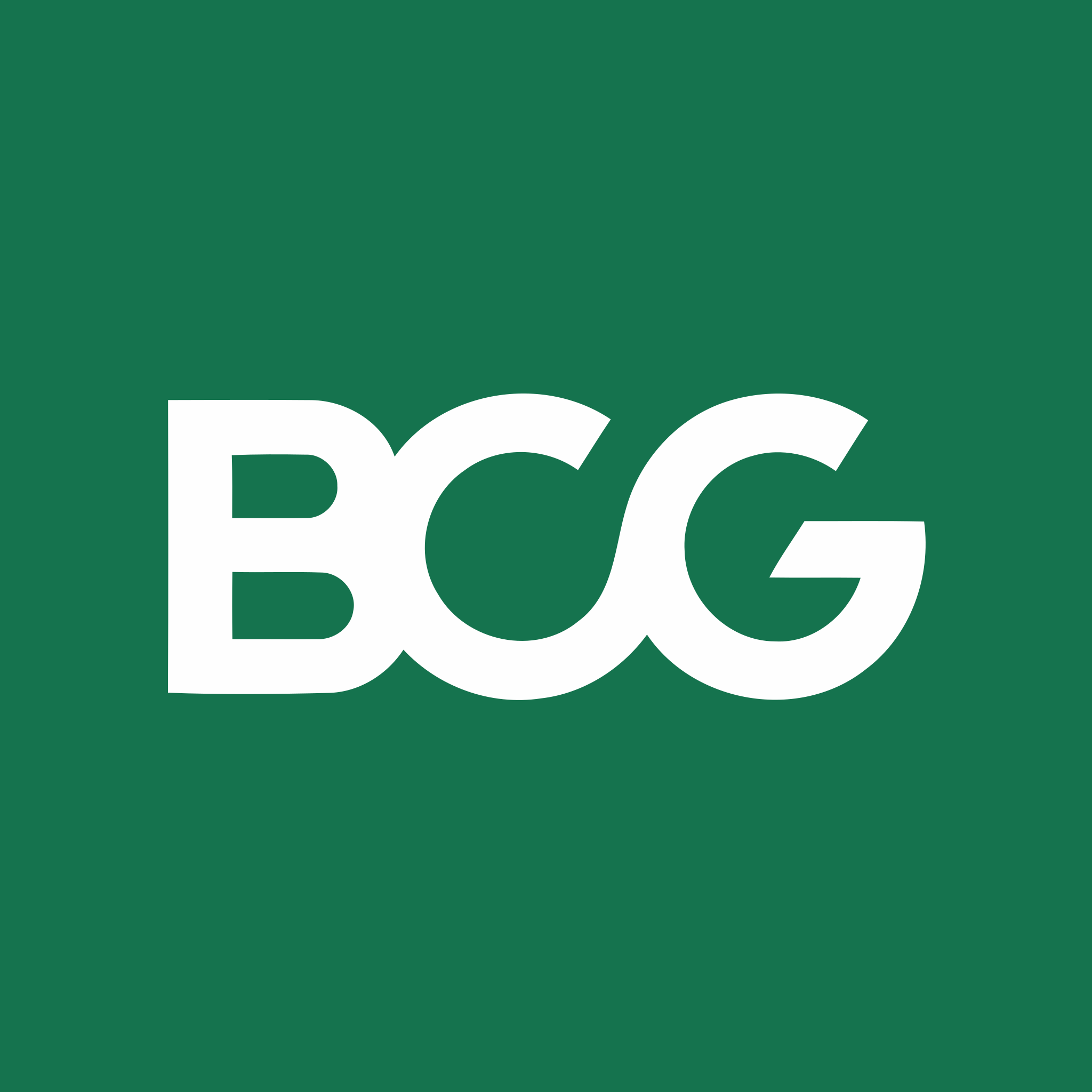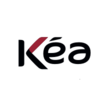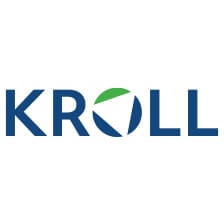Detailed content of our market study
 Inforamtion
Inforamtion
- Number of pages : 35 pages
- Format : Digital and PDF versions
- Last update :
 Summary and extracts
Summary and extracts
1 Market summary
1.1 Definition and presentation
Diapers are an indispensable part of the kit for infants and toddlers from 0 to 2 or 3 years of age. They are used to absorb pee and feces, helping to keep them dry, preventing their skin from becoming irritated or red, and preventing odors from spreading.
Diapers are used in incontinence situations. They are hygiene items made to be worn directly on the body as underwear, given their absorbent properties. Two main types of consumers use diapers: infants and some elderly people with incontinence problems. Within the scope of this study, we will focus only on baby diapers.
The baby diaper market is thus a segment of the baby products industry that is undoubtedly being affected by the demographic and social changes taking place in Italy. The value of production sold of diapers is in sharp decline (-59.6% between 2017 and 2022). Over the same period, annual births are contracting by 13.6 percent.
In addition, more parents are deciding to have children at a more mature age in Italy. The average age of first mothers in 2022 is 32.2 [Istat]. This decision is mainly influenced by the greater degree of financial stability that can be achieved at an older age. The latter is a factor that is believed to dictate different purchasing choices, increasingly directed toward higher quality products.
Nevertheless, there are still many valuable opportunities in the market created by the mentioned premium trend, which mainly have to do with innovation and new technologies for baby diapers that will be, in the coming years, the main differentiators in this shrinking market. In addition, new trends such as the use of environmentally friendly or washable diapers also present interesting investment and business opportunities.
1.2 The global market for baby diapers
In ****, the global baby diaper market is worth $**.** billion. By ****, the market value could touch $*** billion thanks to a compound annual growth rate (***) of *.* percent between **** and ****.
Turnover of the baby diaper industry World, ****-****, in billions of dollars Source: Grand View Research The growing global focus on sustainable products with reduced environmental impact is driving the market for biodegradable diapers. By ****, this market is worth $*.* billion and is expected to grow at twice the compound annual rate (***). In ****, the biodegradable diaper market could reach a value of $*.* billion. Biodegradable baby diaper market World, ****-****, billion dollars Imarcgroup
1.3 The Italian baby diaper market
In order to analyze the Italian baby diaper market, the turnover related to Ateco Code **.**, specifically for "manufacture of sanitary and household products made of paper and cellulose wadding," is considered. In addition, the trend in the value of production sold of baby and incontinence diapers is analyzed, highlighting the relationship between the latter and the turnover of the entire sector.
Turnover
Between **** and ****, the turnover of the sanitary products sector, within which diaper production falls, appears to be growing. During the period under review, the increase is **.* percent with a compound annual growth rate (***) of *.* percent. The advent of the pandemic in ****, thanks mainly to increased demand from hospitals, has certainly contributed to the growth of the industry as evidenced by the +*.*% between **** and ****.
Enterprise turnover Ateco code **.** Italy, ****-****, billion euros Istat
Production sold
Considering now the specific production of baby and adult diapers, between **** and **** the value of production sold is halved. Over the *-year period considered, the value of production fell from *.** billion euros to less than half, *** million. The contraction is sharp and stands at **.*%. However, between **** and **** the trend is positive, after the **** slump: data show growth in the value of production sold (***) over five ...
1.4 The consequences of the Russian-Ukrainian conflict
The outbreak of the Russian-Ukrainian conflict in February **** resulted in, among other things, a general increase in the consumer price index. Consequently, in the absence of data, an increase in prices for baby diapers is also conceivable. The consumer price index rose **.* points between January **** and August ****. This signifies that over an **-month period, prices for consumers increased by **.* percent.
General consumer price index Italy, ****-****, base ****=*** Istat
However, the budget law established, starting in January ****, a *% VAT reduction for diapers. This resulted in a price drop between December **** and March **** of *.* percent.
On the production side, data for the production of paper or wadded sanitary and household products, within which the diaper sector is included, show price growth between January **** and August ****. However, from January **** onward, a decline in producer prices can be glimpsed, with a **-point drop from December **** and August **** (***). However, it should be pointed out that compared to January ****, prices have increased by **.* percent while compared to ****, the increase is **.* percent. Producer price index of sanitary and household products made of paper and cellulose wadding Italy, ****-****, base ****=*** Istat
2 Demand analysis
2.1 Overview of demand
The Italian baby diaper market, like its global counterpart, exhibits some interesting characteristics regarding demand for the product.
Regarding the expenditure incurred for the purchase of diapers, the available data outline a range between the minimum and maximum expenditure of Italian families. Between **** and ****, it is possible to see a reduction in minimum spending during the first year of a child's life, with a negative variance of **.* percent. Maximum spending, on the other hand, appears to be on the rise: over the same period, the value went from €*,*** to €*,*** per year (***). Average expenditure on diapers in the first ** months of a child's life Italy, ****-****, in euros Source: Federconsumatori considering instead the need for diapers, in the first year of life children need about * diapers per day, with significant differences depending on the weeks of life. In the first * weeks the average consumption is ** diapers per week, while at the completion of the first year of life it drops to half, about ** per week. Use of diapers per week Italy, ****, in numbers
2.2 Demand drivers
The demand for baby diapers is closely related to and moves in the same direction as some demographic indicators.
Births in Italy
The demand for baby diapers is strongly influenced by the number of births in the country and their evolution over time.
Number of births Italy, ****-****, in thousands of births Source: ****
As can be seen in the graph above, the number of babies born in Italy decreased by **.* percent between **** and ****. The decline appears to be constant during the entire period with a negative annual change of *.* percent.
The main reason for this is the increasing difficulties young Italians face in finding stable employment, which entails the fact that salaries, especially in the early years of a career, are not particularly high and make young couples fear the cost of bringing a child into the world.
Average age of first mothers in Italy
This situation is also reflected in the fact that Italian women are becoming mothers later in their lives. Between **** and ****, the average age at first childbirth rose by * year.
Average age of mothers (***) in selected years Italy, ****-****, in average age Source: ****
The composition of the demand for baby diapers in Italy can be inferred from ...
2.3 Composition and geographical distribution of demand
Regarding the geographical distribution of demand, a map was created with the number of births in each Italian macro-region, assuming a correlation between this and the demand for diapers.
In ****, the Northwest collects **.* percent of the total number of births in Italy. This is followed by the South with **.*%, the Northeast with **.*%, the Center with **.*%, and finally the Islands with **.*%
MACROREGION PERCENTAGE OF BIRTHS PERCENTAGE OF POPULATION Northwest **.*% **.*% Northeast **.*% **.*% Center **.*% **.*% South **.*% **.*% Islands **.*% **.*%
2.4 New demand trends: washable diapers
The growing interest in issues of environmental sustainability and waste reduction is also affecting the diaper industry. In fact, more and more families are deciding to change their disposable-based consumption habits toward the purchase of washable diapers. The trend is motivated by several reasons:
Environmental: using washable diapers is an environmentally friendly choice as water and energy consumption due to washing washable diapers in a washing machine are not significantly higher than those of the life-cycle-production cycle of disposable diapers. Washing diapers with high-performance energy washing machines, at full load and medium-low temperatures, and air-drying instead of in mechanical dryers also shifts the water and energy balance in favor of washable diapers.(***) Economical: Typically, children need diapers about up to * */* years of age, and during this time the average consumption is about *,*** diapers. Depending on the brand and package, a disposable diaper comes to cost between *.** and *.** cents. If we take the minimum cost of *.** cents as an example, it means that in the two and a half years of use, a family spends about *,*** euros on diapers.And as an alternative to the disposable diaper, the family with a baby uses for two and a half years the washable ones, ...
3 Market structure
3.1 Market structure
In order to analyze the market structure, enterprises under Ateco code **.** on "manufacture of sanitary and household products from paper and cellulose wadding" are considered. The number of enterprises, number of employees and legal form of activities are considered.
Number of enterprises
Between **** and ****, the number of enterprises collected under Ateco Code **.** decreased by *.* percent. As the graph shows, the decline is homogenous over the entire period, with an average annual change of *.*%. The advent of the pandemic in **** does not seem to have affected the sector, as shown by the stability in the decrease of firms.
Active enterprises Ateco code **.** Italy, ****-****, in number Istat
Employees
In terms of employees, there is growth in the total number over the period taken. Between **** and ****, employees in the sector increased by *.*%. However, the trend is uneven during the * years considered: between **** and **** the number of employees increased by **.*% while between **** and **** there is a decrease of *.*%. However, when compared with the number of enterprises, the growth in the number of employees indicates a consolidation of the sector.
Employees enterprises Ateco Code **.** Italy, ****-****, in number Istat Legal form Regarding the legal form of business, limited liability companies dominate the sector, garnering **.* percent ...
3.2 The value chain
It is possible to divide the materials from which diapers are made into various categories according to their origin and according to their function:
Cotton: the most widely used fabric, inexpensive, soft, breathable, durable and dries fairly quickly. Inside washable diapers it is found in the form of cotton terry, chenille, flannel, jersey and interlok, and gauze. Hemp: This is a very absorbent, thin and naturally antimicrobial fabric that is ideal for overnight use. It dries more slowly than cotton. Normally found in diapers in the form of flannel and jersey in a cotton/hemp blend as hemp alone has harder and therefore less comfortable fibers. Bamboo: is the absolute most absorbent fabric (***), but it dries very slowly. It is durable, breathable and soft as well as naturally antifungal and antibacterial, and therefore suitable for sensitive skin. Wool: a natural textile fiber with excellent thermo-hygrometric properties. This means that it is able to maintain a balance of moisture and temperature inside the diaper; when there is a high temperature and moisture inside it is released where there is less and that is outside Fleece/Microfleece: is a synthetic fabric created by the development of a synthetic fiber, derived from polyester. It ...
3.3 Distribution channels
For the purchase of diapers, families mainly turn to three distribution channels: large-scale retail trade (***), pharmacies and e-commerce.
Large-scale retail
The businesses it includes are: hypermarkets, supermarkets, discount grocery and convenience stores, and other miscellaneous non-specialized establishments, which generally consist of small non-specialized grocery stores
Large organized retail enterprises Italy, ****-****, in number Istat The absolute prevalence of minimarkets in terms of numbers is confirmed again in ****, with **.* percent of businesses falling under this category. This is followed by supermarkets at **.* percent, discount stores at *.* percent and finally hypermarkets with just *.* percent of the total number of businesses.
Large organized distribution, breakdown by type of business Italy, ****, % Istat
Pharmacies
Between **** and ****, the total number of pharmacies in Italy grew by *.*%. The growth is concentrated between **** and **** (***) while in subsequent years, due to the pandemic outbreak, the total number of businesses is essentially unchanged with +*.*% between **** and ****.
Pharmacies Italy, ****-****, in thousands Istat
E-Commerce
In light of these difficulties, more and more parents are resorting to online portals to purchase necessary products. By buying online, the savings on the minimum amount spent on maintaining a baby in the first year of life is ** percent, and on the maximum amount ** percent. This is ...
3.4 The main actors
Production
Pampers: established in ****, is a global diaper brand of Procter & Gamble, a leader in the disposable diaper industry, in Italy they have been produced and marketed since **** by Fater S.p.A.today, Pampers are produced in nearly ** manufacturing plants in ** countries and are available in more than *** countries worldwide. Since ****, Pampers has been working with UNICEF to help eliminate maternal and neonatal tetanus (***), a deadly disease that is still responsible for the death of one newborn baby every nine minutes.
Huggies: first marketed in ****, the brand is part of Kimberly-Clark, the world's leading personal care products company. The company is actively collaborating with AWHONN to help reduce factors that contribute to maternal morbidity and mortality among all mothers
Mamila: established in ****, the company specializes in the production of products for newborns. The products are the result of careful research aimed at obtaining materials that are suitable for sensitive skin, microbiologically pure, and free of potentially harmful substances. The company has chosen to use only recyclable paper for the shipping boxes and Greenbox Cotonini packs, eliminating the use of plastic. In addition, the cellulose in Cotonini's diapers and absorbent sheets is produced with respect for the sustainable use of ...
4 Supply analysis
4.1 Composition of the offer
Many brands and different types of diapers can be found on the market: the most commonly used are disposable diapers and washable diapers. Both categories have specific characteristics and different materials.
To better understand the composition of the supply, it is important to understand what the differences are between disposable and washable diapers. The former are certainly more convenient in that they can be thrown away after use, while the latter are an environmentally friendly alternative that can also prove to be a more economical choice in the long run. For children with particularly delicate skin, it is also possible to opt for hypoallergenic diapers, made from natural materials and, in most cases, biodegradable.
Types of diapers
There are three main types of diapers on the market:
Disposable: These are definitely the most popular and widely used because they make it easier for the baby to change. This type is further divided into disposable diapers, which, once soiled by the baby, are thrown into unsorted waste, and biodegradable diapers, made of biodegradable materials, which can be thrown into organic waste. Washable: Washable diapers are an environmentally friendly alternative to disposable diapers. They are diapers made of washable fabrics with absorbent materials ...
4.2 The prices
The following is a list of the main products available in the Italian market:
Subscriptions
4.3 Supply trends: The green alternative
Consumers are becoming more environmentally conscious every day, and ecological issues are playing an increasingly important role in their choices. In the Italian baby diaper market, this translates into different discussions and opinions on whether washable diapers, besides being the cheapest alternative, are actually the most environmentally friendly.
Here is a summary of the main variables to consider when evaluating the impact of washable diapers versus disposable diapers.
Source: ****
Source: ****
As the last row of the table shows, the ecological footprint for ** months of continuous use of washable diapers is greater than that of the disposable alternative. However, most of the impact for washable diapers comes from the water consumption incurred in washing them. Otherwise, in the other items in the table it can be seen that, in many categories, the impact of these diapers is much less than that of disposables. Thus, for eco-conscious consumers, to further reduce the environmental impact of washable diapers, it is recommended that they be washed at full load (***).
However, the growing popularity of these diapers, along with the fact that many initiatives are beginning to circulate in Italy to promote their use (***), testify that there is definitely room for them in the Italian baby ...
5 Rules and regulations
5.1 Rules and regulations
Infant and baby diapers must comply with Directive ****/**/EC in order to be released for free circulation in the European Community.
Compliance of baby and toddler diapers, as well as changing tables and many other baby products, is governed by laws and regulations that do not require CE marking. These fall under Directive ****/**/EC "General Product Safety" and must also meet product standards to be compliant.
The fact that CE marking is not required does not mean that these products can be sold without any caution, in fact no product can be sold without the manufacturer being in possession of the entire technical file. The technical file is the set of documents that demonstrate the safety of a diaper in accordance with Directive ****/**/EC. These in particular must meet very important constraints related to the migration of substances to children's bodies. This performance must be demonstrated through material certificates issued in accordance with EN **-*.
In addition, Decree No. ** of May **, ****, dictates the criteria to be met in order to recover and recycle so-called PAP, "personal absorbent products" such as diapers, diapers and tampons once used. Thanks to the measure - effective July **, **** - heterogeneous plastics based on polyolefins, SAP (***) will ...
5.2 Aid and subsidies from the state
In Italy there are several bonuses to help families cope with the expenses of bringing a child into the world.
INPS Birth Premium: equal to *** euros, it is granted to all mothers regardless of ISEE. It is disbursed by INPS in a lump sum, as a birth bonus: it is both for pregnant women (***) and for families who adopt or take in pre-adoptive foster care a child or infant. Daycare Bonus:The same applies to families facing daycare expenses: these, thanks to the daycare bonus, can recover up to *,*** euros each year. Bonus Bebè:paid monthly in the case of new births, pre-adoptive fostering and adoptions occurring throughout **** amounts to ***.** euros for five months (***). In fact, the ISEE of the applicant household must not exceed the threshold of **,***.** euros. Single and universal allowance for dependent children: The allowance ranges from a minimum of €**/month to a maximum of €***/month for each dependent minor child. There are increases in the case of dependent children with disabilities, mothers under ** years of age, large families, both parents working, and families with Isee less than € ** thousand.
6 Positioning of actors
6.1 Segmentation
- FATER S.P.A.
- Conad
- Coop
- Carrefour Italia
- Pampers
- Huggies
All our studies are available online in PDF format
Take a look at an example of our research on another market!
 Choosing this study means :
Choosing this study means :
Access to more than 35 hours of work
Our studies are the result of over 35 hours of research and analysis. Using our studies allows you to devote more time and added value to your projects.
Benefit from 6 years' experience and over 1,500 industry reports already produced
Our expertise enables us to produce comprehensive studies in all sectors, including niche and emerging markets.
Our know-how and methodology enable us to produce reports that offer unique value for money.
Access to several thousand articles and paid-for data
Businesscoot has access to all the paid economic press as well as exclusive databases to carry out its market research (over 30,000 articles and private sources).
To enhance our research, our analysts also use web indicators (semrush, trends, etc.) to identify market trends and company strategies. (Consult our paying sources)
Guaranteed support after your purchase
A team dedicated to after-sales service, to guarantee you a high level of satisfaction. +44 238 097 0676
A digital format designed for our users
Not only do you have access to a PDF, but also to a digital version designed for our customers. This version gives you access to sources, data in Excel format and graphics. The content of the study can therefore be easily retrieved and adapted for your specific needs.
 Our offers :
Our offers :
the diaper market | Italy
- What are the figures on the size and growth of the market?
- What is driving the growth of the market and its evolution?
- What is the positioning of companies in the value chain?
- Data from several dozen databases
5 reports pack (-15%) IT Italy
- 5 reports at €75.6 excluding VAT per study to choose from our Italian catalogue for 12 months
- Save 15% on additional studies purchased
- Choose to be refunded any unused credit at the end of the 12-month period (duration of the pack)
See the terms and conditions of the pack and the refund of unused credit.















